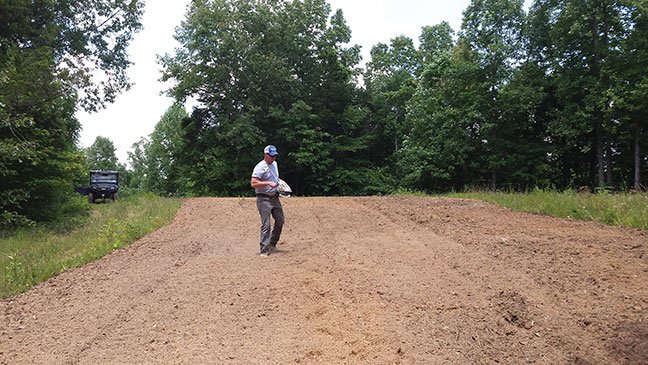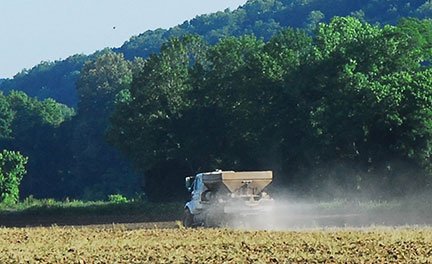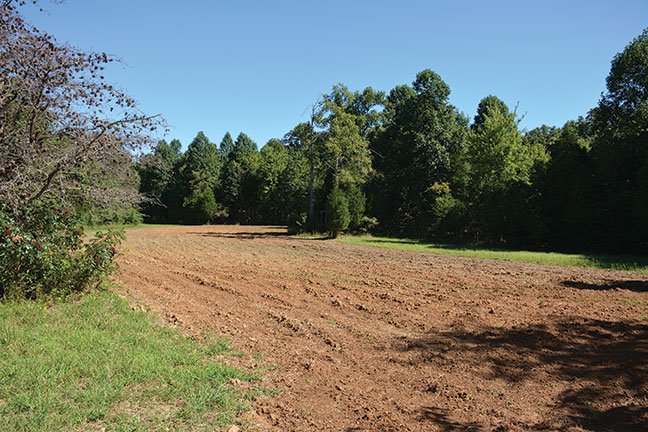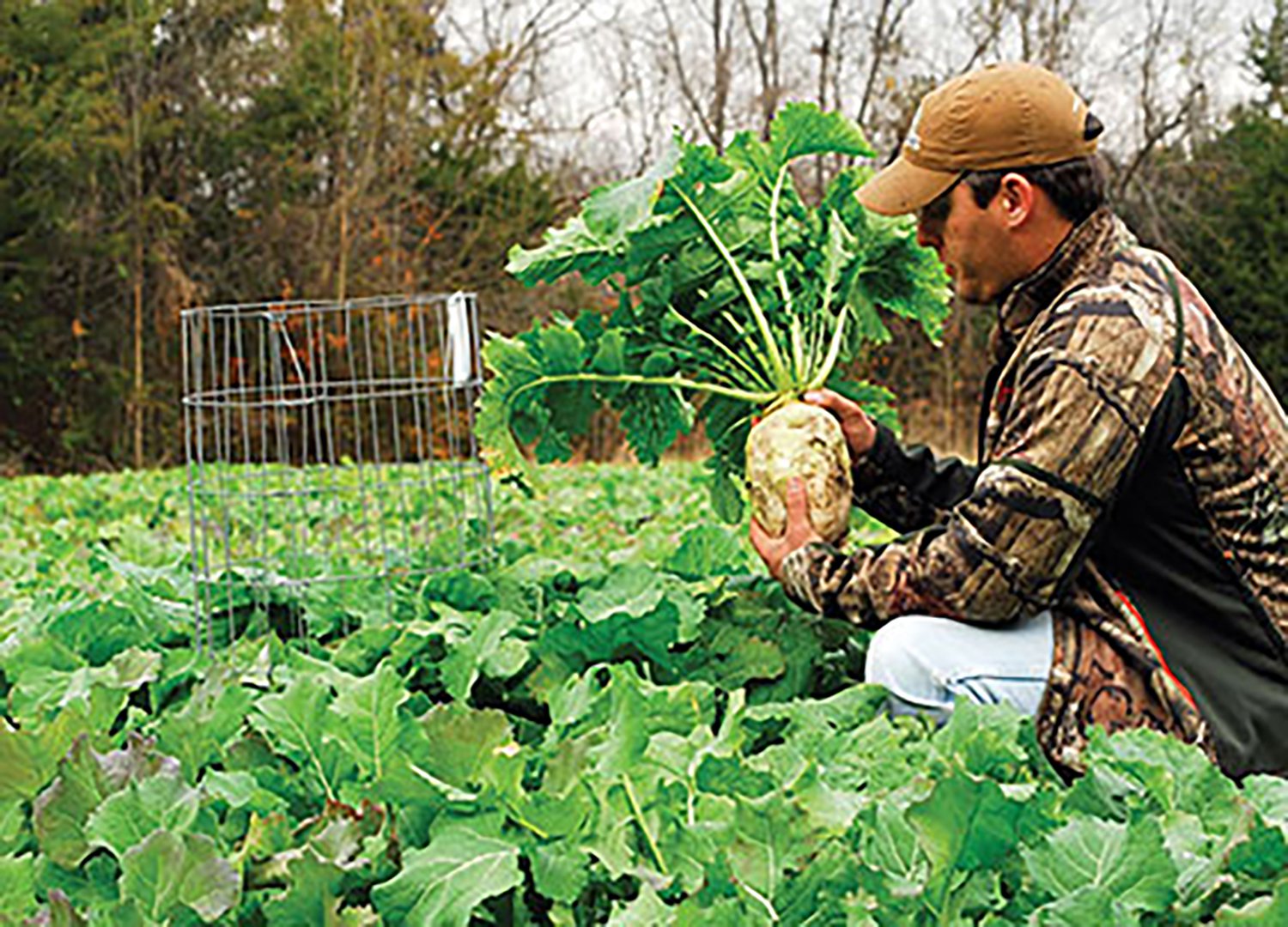So, what the heck did deer eat before crops, food plots and the wide range of things we see them eating today, including my wife’s daylilies?
During pre-settlement, it’s a good bet that deer congregated around large meadows and openings that were regularly burned by Native Americans. Fire creates a flush of regrowth by top killing plants as well as providing many nutrients to the soil. Essentially, the same thing as we do now with fertilizer. At that time there was also an abundance of large mast producing trees that would maintain herds throughout the winter. In all reality, deer may have been more scattered then than they are now on food plots.
With today’s food plots we are packing in a tremendous amount of food in a small area hoping to benefit the most deer on the smallest tract of land. Getting deer to concentrate on food plots may also be the key in attracting some larger bucks to your property. The exception is feeders, which as you know, concentrate deer in even tighter quarters and given problems with diseases like CWD should be avoided.
Depending on weather and other conditions you may not always see large numbers of bucks on your food plots, but don’t let that fool you. A couple of years back we had a friend who shot a nice buck on his farm. They never saw the buck on the food plot but there is little doubt that because many does had switched their feeding patterns from a nearby soybean field to a new food plot. The does attracted the buck who continually hung back from the field. So don’t always hunt just the plot. Just as in this case the trail leading to the plot produced a nice trophy buck.
While deer are heavily using agriculture, crops don’t put all your eggs in this basket. Once that soybean crop is combined, chances are deer will quickly shift to another food source, so fall food plots can pay dividends during hunting season. Many of the bucks I have written about over the years have one thing in common — They were taken near food plots.
August is a good time to begin working ground and planting seed. While you do want to attract as many deer as possible, also consider providing nutrition which will help carry your herd through the winter months. One of the worst times for deer from a nutritional standpoint is early spring. Many natural foods have still not greened up yet and food plots may help carry some deer through this critical period.
First item for a fall food plot is to get your soil tested. Deer will benefit from well-balanced soil and once you have recommendations, let your local farm cooperative mix the fertilizer together.
What to plant is always in question and are they going to eat it? There is a wide selection of food plot mixes and all will provide forage for deer. One of the quickest is winter wheat, but also oats and rye. To plant these grains, disk the ground and simply sow the seed. Deer will readily utilize these green cereal crops as soon as they come up and they will continue eating them well into the spring. To monitor your usage or the success of any food plot, set up an excluder. You can make one by circling a small section of fence three to four foot in diameter. This excluder prevents deer from eating inside the fence and you can get an idea of how much deer are consuming.
If you plan to sow clover later this winter wheat has always been my choice to use as a “nurse crop.” Wheat protects the soil through the winter months and allows the clover to become established. In this case, spread the clover in January. In most cases, fall is too dry for sowing clover seed. However, if you wait to broadcast clover over the plot in January there is a good chance you should have clover by early summer.
By far one of the hottest items on the market today is a group of plants called brassicas. These are high in protein, vitamins and minerals and while deer may be slow getting used to these plants, it won’t take long for them to catch on.
If you have never planted brassicas, don’t expect great results in year one. I never knew this until I planted them that deer must learn over time to shift over to these plants. Another group of plants deer like are turnips and beets. While not brassicas, this is a quick fall planting. I also know more than one hunting camp that shares these two crops with the deer.
In managing brassicas, understand that cool weather helps start the process of allowing the plants to convert starches to sugar. At their max production most brassicas range from 34-42 percent crude protein and there’s no comparison when compared to corn which runs from 8-12 percent. Corn will have the best benefit for your deer during cold weather as this crop or supplemental feed provides carbohydrates for sustaining energy. Again, brassicas will fill this gap as they can provide instant energy!
To have brassicas ready for fall hunting you should plan on getting ground prepared and seeded around mid-July to early August. The best way in determining when to plant is check “days to maturity” listed on the seed bag (generally around 80-days) and find the average date for first frost in your area and simply count back 80 days. Planting in the summer you will also need to watch your soil moisture as this is critical for seed germination.
Some of this seed can be purchased at local feed stores, or if you are not sure what to plant, consider some of the pre-mixed food plot mixes such as Mossy Oak-BioLogic. BioLogic developed pre-mixed packets set up for regions and plot size. Food plot mixes, including Deer Radish, Full-Draw and Green Patch-Plus are all good choices. A good late winter mix is also Winter Bulbs & Sugar Beets. In addition to deer food several of the brassicas are also good ground builders as well.
So, this August, think about food plots and not just what deer need this fall but what your deer herd might need in early spring for that final boost into summer. It will attract deer and you can bet on seeing bigger bucks because better veggies do equal better bucks.






